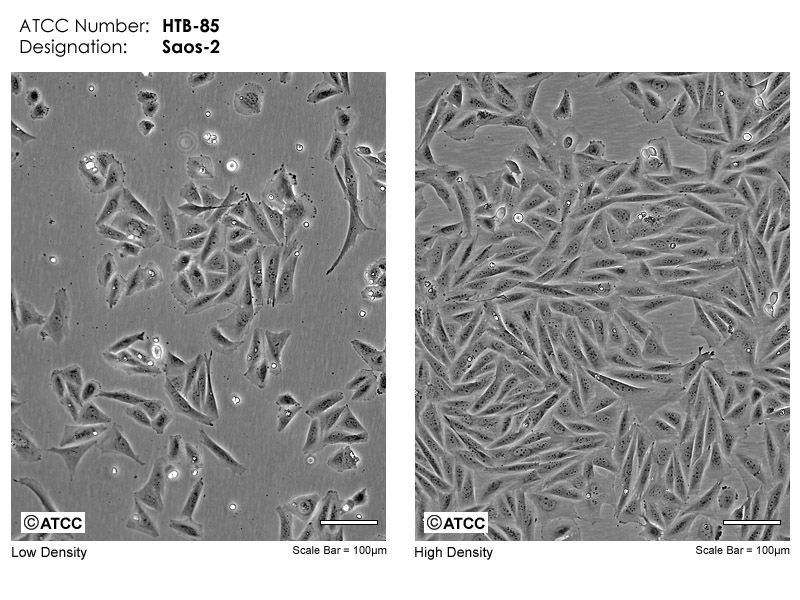Saos-2
HTB-85 ™
Explore our dataSaos-2 is a cell line with epithelial morphology that was isolated from the bone of an 11-year-old, White, female osteosarcoma patient treated with RTG, methotrexate, adriamycin, vincristine, cytoxan, and aramycin-C. Use this cell line as a transfection host and in your cancer research.
This is one of an extensive series of human tumor lines isolated and characterized by J. Fogh and G. Trempe.


